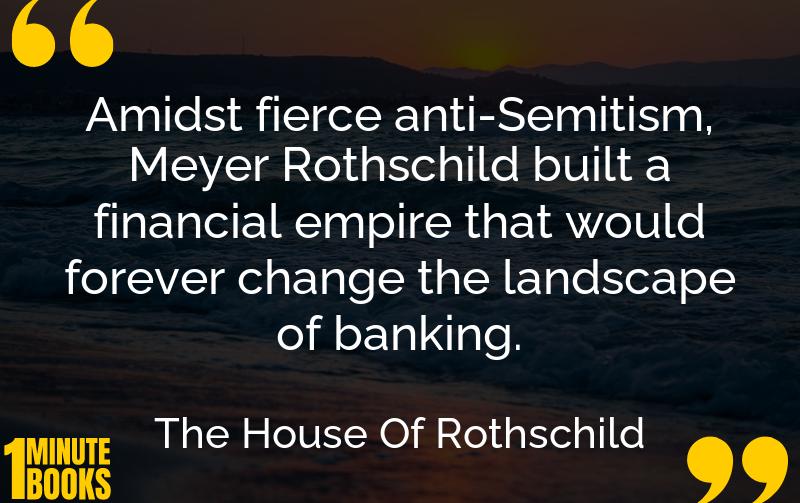
The House of Rothschild explores how the Rothschild family established a banking empire in the 19th century, navigating anti-Semitism, political connections, and myths to become a key player in global finance.
Main Lessons
- Meyer Rothschild overcame anti-Semitism in 18th-century Frankfurt to establish a successful banking business.
- The Rothschild myth suggests their wealth began with managing William IX’s English investments, yet truth lies in strategic international moves.
- The family’s unity was integral, with Nathan Rothschild pivotal in expanding their business to England.
- Loans to governments during periods of strife, such as the Napoleonic Wars, significantly boosted Rothschild profits.
- The Rothschilds’ insider contacts with political elites led to both advantages and unjust myths of undue influence.
- Advocating for Jewish emancipation reflected the family’s responsibility towards their community.
- A sophisticated communication network was central to the family’s financial strategy, enabling rapid information flow.
- Five Rothschild houses formed a multinational partnership, enhancing their collective strength and market influence.
- The death of Nathan Rothschild marked a shift in family dynamics and impacted the global financial market.
- Their patronage of the arts, while prestigious, also highlighted the family’s secular leanings.
- Heavy investments in railways led to both immense profits and becoming focus points during Europe’s 1848 revolutions.
- The social revolutions of 1848 posed a significant challenge, pushing the family to the brink of bankruptcy.
- Despite threats, the unity among the Rothschild houses ensured their survival and continued legacy.








